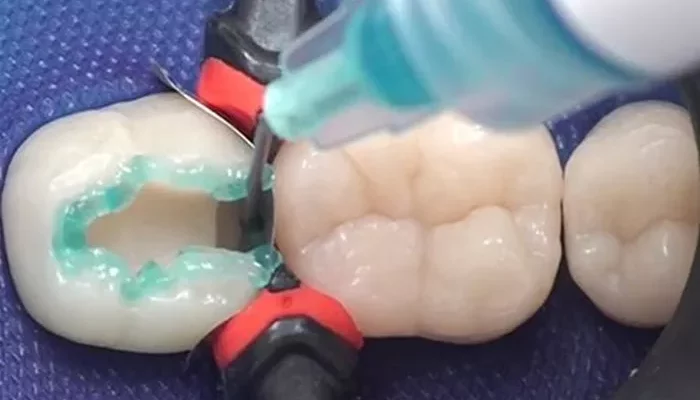When it comes to dental fillings, patients often have questions about which material is the best for permanent restoration. As a dentist, it’s crucial to understand the various options available and their respective advantages and disadvantages. This article aims to provide a comprehensive guide to the best permanent tooth filling materials, presented in a logical and easy-to-understand manner.
Overview of Tooth Filling Materials
Permanent tooth filling materials can be broadly classified into several categories: amalgam (silver fillings), composite resins, glass ionomers, and ceramics. Each material has its unique properties and suitability for different dental situations.
Amalgam (Silver Fillings)
Composition and Characteristics
Amalgam is a mixture of silver, tin, zinc, copper, and mercury, with mercury comprising nearly 50% of the mixture. It is a traditional filling material known for its durability and compressive strength.
Advantages
High Compressive Strength: Amalgam can withstand the pressure of chewing, making it suitable for posterior teeth that bear significant occlusal forces.
Cost-Effective: Amalgam fillings are typically the most economical option.
Single-Visit Treatment: The procedure can often be completed in a single visit.
Low Moisture Sensitivity: Unlike some other materials, amalgam is less sensitive to moisture during placement.
Disadvantages
Aesthetic Concerns: Amalgam fillings are dark and do not match the natural color of teeth, which can be a concern for patients seeking a more aesthetic restoration.
Corrosion and Discoloration: Over time, amalgam can corrode and lose its shine, potentially causing discoloration of adjacent tooth structures.
Lack of Adhesion: Amalgam does not bond to tooth structures, requiring the preparation of a box-shaped cavity that may involve removing more tooth tissue.
Mercury Content: Although studies have shown that the amount of mercury released from amalgam fillings is similar to the natural amount found in the human body, some patients may still have concerns about its potential health effects.
Composite Resins
Composition and Characteristics
Composite resins are made of a resin matrix reinforced with glass, quartz, or other inorganic fillers. They are popular for their aesthetic properties and ability to match the natural color of teeth.
Advantages
Excellent Aesthetics: Composite resins can be matched to the natural color of teeth, making them ideal for anterior teeth or any area where aesthetics are a concern.
Bonding Capability: Unlike amalgam, composite resins bond to tooth structures, providing a more secure restoration and reducing the need for extensive tooth preparation.
Versatility: Composite resins can be used for a variety of restorations, including fillings, inlays, onlays, and veneers.
Fluoride Release: Some composite resins release fluoride, which can help prevent further tooth decay.
Disadvantages
Cost: Composite resins are more expensive than amalgam.
Wear and Tear: Although composite resins have improved in strength and durability, their long-term performance may not match that of amalgam in high-stress areas.
Shrinkage: Composite resins can shrink slightly after placement, creating gaps between the restoration and tooth structure that may require additional adjustments.
Time-Consuming: Placement of composite resins often requires multiple layers and can be more time-consuming than amalgam.
Glass Ionomers
Composition and Characteristics
Glass ionomers are made of acrylic acid, glass, and fluoride. They are known for their low刺激性 to the pulp and their ability to release fluoride.
Advantages
Pulp-Friendly: Glass ionomers are gentle on the pulp and can be used as a lining material under other restorations.
Fluoride Release: They release fluoride, which helps prevent tooth decay.
Adhesion: Glass ionomers bond to tooth structures, reducing the risk of gaps forming between the restoration and tooth.
Disadvantages
Lower Strength: Traditional glass ionomers are less strong than composite resins or amalgam, making them more prone to wear and fracture.
Aesthetic Limitations: Although they are closer to tooth color than amalgam, they may not match the natural appearance of teeth as well as composite resins.
Multiple Layers: Resin-modified glass ionomers require multiple layers and light-curing, which can extend the treatment time.
Ceramics
Composition and Characteristics
Ceramic materials, such as porcelain, are used for a variety of dental restorations, including inlays, onlays, crowns, veneers, and implants. They are known for their durability and aesthetic appeal.
Advantages
Excellent Aesthetics: Ceramics can be matched to the natural color and translucency of teeth, providing a highly aesthetic restoration.
Durability: Ceramic restorations are strong and resistant to wear, making them suitable for long-term use.
Stain Resistance: Ceramics are less likely to stain than composite resins.
Disadvantages
Cost: Ceramic restorations are typically the most expensive option.
Fragility: Although strong, ceramics can be brittle and more prone to fracture if subjected to excessive force.
Preparation Requirements: Ceramic restorations often require more extensive tooth preparation, including the removal of more tooth tissue to accommodate the restoration.
Choosing the Best Material
The choice of the best permanent tooth filling material depends on several factors, including the location of the filling, the size and depth of the cavity, the patient’s chewing habits, aesthetic concerns, and budget.
Posterior Teeth: For posterior teeth that bear significant chewing forces, amalgam or composite resins may be suitable. Amalgam offers excellent durability and compressive strength, while composite resins provide better aesthetics.
Anterior Teeth: For anterior teeth or any area where aesthetics are a priority, composite resins or ceramics are typically the best choices. Composite resins can be matched to the natural tooth color, while ceramics offer superior aesthetics and durability.
Cost Considerations: Amalgam is the most economical option, followed by composite resins, and ceramics are the most expensive.
Patient Preferences: Ultimately, the choice of filling material should also take into account the patient’s preferences and concerns.
Conclusion
There is no one-size-fits-all solution when it comes to choosing the best permanent tooth filling material. Each material has its unique advantages and disadvantages, and the best choice depends on the specific needs and preferences of the patient. As a dentist, it is crucial to educate patients about the different options available and help them make an informed decision based on their individual circumstances.
Related topics:

